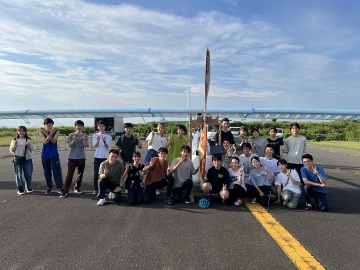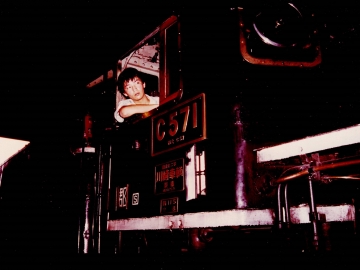Building a fully human-powered aircraft with the WASA Birdman Project
 “It was a simple reason: I just wanted to build something,” reflects Kouki Mizumoto, a 3rd year undergraduate of the School of Fundamental Science and Engineering, on why he decided to join WASA Birdman Project, a student project under the Waseda Univ. Aeronautics and Space Association (WASA). While also motivated by the thought of building something together with fellow students and using his own expertise in electronics and programming, Kouki was ultimately fascinated by getting to build something so grand in scale. The WASA Birdman Project’s ultimate goal is to build and successfully fly a human-powered aircraft, taking victory in the annual Japan International Birdman Rally.
“It was a simple reason: I just wanted to build something,” reflects Kouki Mizumoto, a 3rd year undergraduate of the School of Fundamental Science and Engineering, on why he decided to join WASA Birdman Project, a student project under the Waseda Univ. Aeronautics and Space Association (WASA). While also motivated by the thought of building something together with fellow students and using his own expertise in electronics and programming, Kouki was ultimately fascinated by getting to build something so grand in scale. The WASA Birdman Project’s ultimate goal is to build and successfully fly a human-powered aircraft, taking victory in the annual Japan International Birdman Rally.
As most lofty goals do, this dream of a perfect flight comes with many obstacles. “Building the airframe is a year-long process. We run into unforeseeable hurdles, like machinery breaking down, workshop relocations, parts damaged on the airfield… Also, if one manufacturing team’s progress falls behind, that effects the other teams’ work; the aircraft cannot be completed until every team’s work is finished.” While Kouki describes the process as working under pressure, he also can feel the growth and increased sense of unity when they overcome these challenges. “Through participating in this club, I’ve gained a sense of responsibility needed of a working member of society, as well as the communication skills needed for achieving goals when working in a team.”
Japanese article: 鳥人間コンテストに向けて人力飛行機を製作しています
Professor Kondo’s 40 plus year adoration for trains and the Japanese rail system
 Professor Keiichiro Kondo currently teaches at Waseda’s Faculty of Science and Engineering, School of Advanced Science and Engineering. When Kondo was in junior high school, he happened upon an article in a train enthusiast magazine that talked about how the 201-type train used as the rapid-service train for the Chuo Line had a motor system controlled entirely by one single on/off switch. As a young student, this piece of information was utterly baffling, and the desire to understand more about this mechanism sparked an interest in electrical engineering, and became a motivating factor towards his future work and research. In fact, the very mechanism that caught his curiosity as a student —The principle of turning off the thyristor externally— is a concept he now teaches in his lectures.
Professor Keiichiro Kondo currently teaches at Waseda’s Faculty of Science and Engineering, School of Advanced Science and Engineering. When Kondo was in junior high school, he happened upon an article in a train enthusiast magazine that talked about how the 201-type train used as the rapid-service train for the Chuo Line had a motor system controlled entirely by one single on/off switch. As a young student, this piece of information was utterly baffling, and the desire to understand more about this mechanism sparked an interest in electrical engineering, and became a motivating factor towards his future work and research. In fact, the very mechanism that caught his curiosity as a student —The principle of turning off the thyristor externally— is a concept he now teaches in his lectures.
Prior to teaching, Kondo worked with the Railway Technical Research Institute for 16 years, and coupled with his passion and extensive knowledge towards trains, a simple train ride for him is quite a different experience than the average passenger. In his Waseda Weekly article, Kondo explains his train-commute “routine,” from looking up the differences in train departure times between stations, down to the very second the doors close, to inspecting the various railway yards that pass by outside his window during his trip. For Kondo, these railway yards conjure up images of the behind-the-scene processes: the inspection and repair of trains, cost of maintenance, the difficulty of quality assurance in the Japanese railway vehicle manufacturing industry and the brilliant engineers who make it all possible… For Kondo, his daily commute is a chance to reflect on the railway system, leaving him with a sense of appreciation for these trains and the people who keep them running on time.
Japanese article: 鉄道に心酔して40ウン年 朝の通勤電車のわがルーティン







